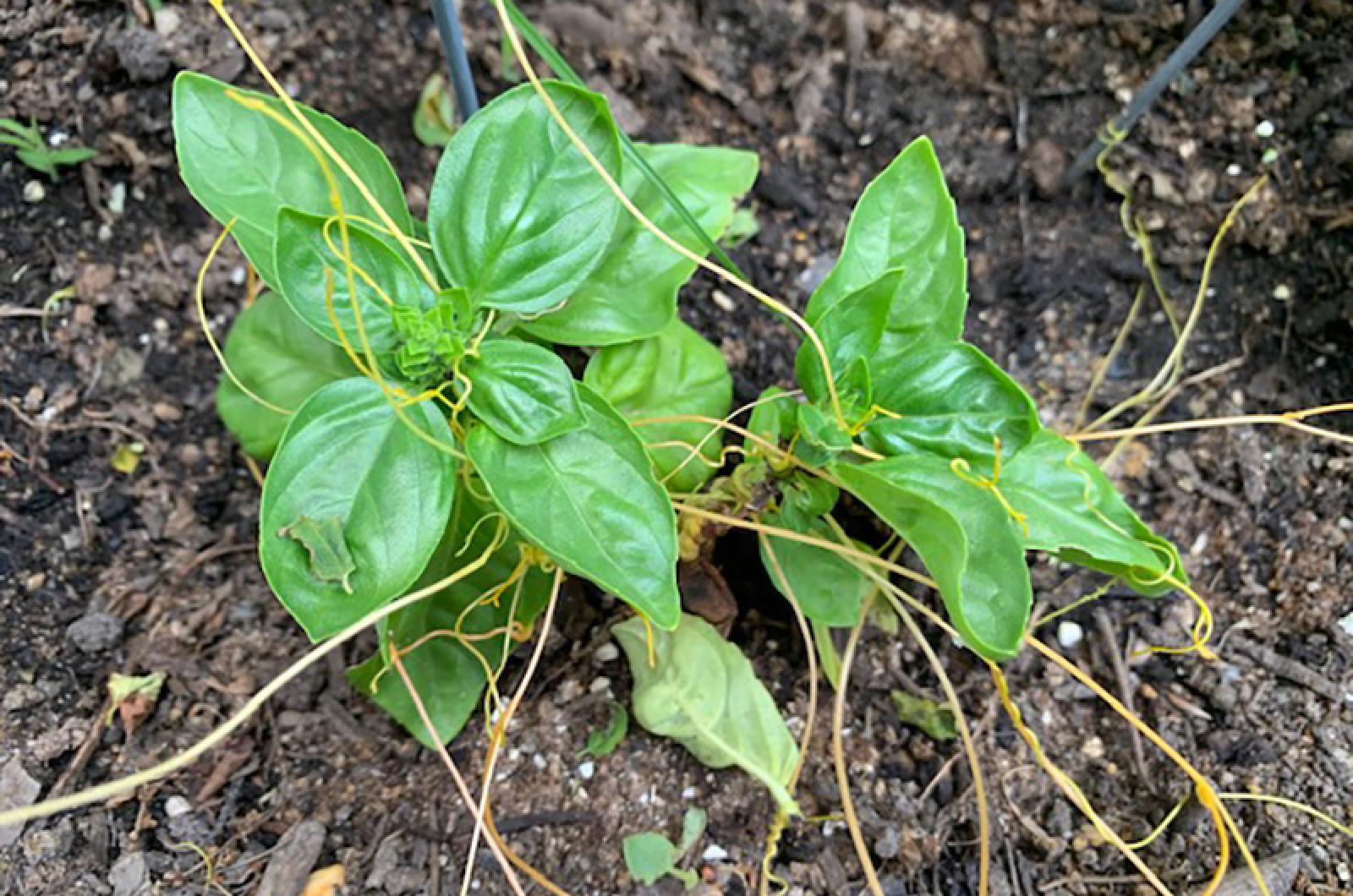Basil should grow with no strings attached. So, it was clearly a string of bad luck that befell an Edgartown gardener when she noticed strange threads on her herbs.
Yellow hairlike projections grew around and among her basil, twinning and twisting about the stems and leaves and growing denser by the moment. It is good that she didn’t dodder about, searching for identification of the strange strings. Speed was of the essence, since some varieties of the organism she found are capable of growing up to six inches a day and could have easily spread to the rest of her garden, yard and beyond.
Cuscuta, more commonly called dodder, was the pest that was parasitizing her plant. Its aliases include devil’s hair, witch’s hair, wizard’s nest, devil’s guts, hellvine, and strangletare. All allude to its nasty nature.
Dodder is considered a holoparasite, meaning it requires a host to complete its lifecycle. Dodder starts as a seed. If, after germination, the seed cannot find a host within 10 days, the plant will die. This was not the case for my friend whose basil was being accosted.
Dodder is also an ectoparasite, meaning it lives on the outside of its host. But that designation gets a little fuzzy when you look deeper into its lifestyle. Dodder survives by using haustoria, which are rootlike structures that penetrate into its host to gather nutrients. When the haustorium get established, the roots that emerged from its own seed die and the dodder becomes wholly dependant on its host. Root-less and fancy free.
The stringy appearance of this plant belies the fact that it does actually have leaves, though they are small, scalelike and virtually undetectable. Not surprisingly, these reduced leaves have low levels of chlorophyll and are unable to photosynthesize enough to survive without their host. It also explains why they are yellow, orange, or red, not green.
While there are a few native varieties, most of the dodder reported by the public is the non-native and invasive type, which are all on the state’s prohibited plant list. This list prohibits the importation, sale and trade of plants determined to be invasive in Massachusetts.
Which leads to the obvious question of how this invader got to the garden. Dodder is a hitchhiker. Its seeds can survive up to 20 years, and it is most often transported in soils, on equipment and in infected plant materials. Likely, the seeds were hidden in the soil that the basil was planted in or in the soil that was put into the planter.
The best thing my friend could do was to immediately remove the dodder, the basil plant, and all of the soil in the pot. Because of dodder’s gregarious nature, the power of those haustoria embedded in its host, and its seed stability, removing just the stringy growths won’t keep this plant down. Dispose of dodder properly (not in a compost pile) by bagging it and throwing it away with the trash.
Whatever you do, be aggressive with its removal and don’t ever dote on the dodder. If you don’t destroy it, it will simply string you along and return to strangle another day.
Suzan Bellincampi is islands director for Felix Neck Wildlife Sanctuary in Edgartown and the Nantucket Wildlife Sanctuaries. She is also the author of Martha’s Vineyard: A Field Guide to Island Nature and The Nature of Martha’s Vineyard.




Comments
Comment policy »